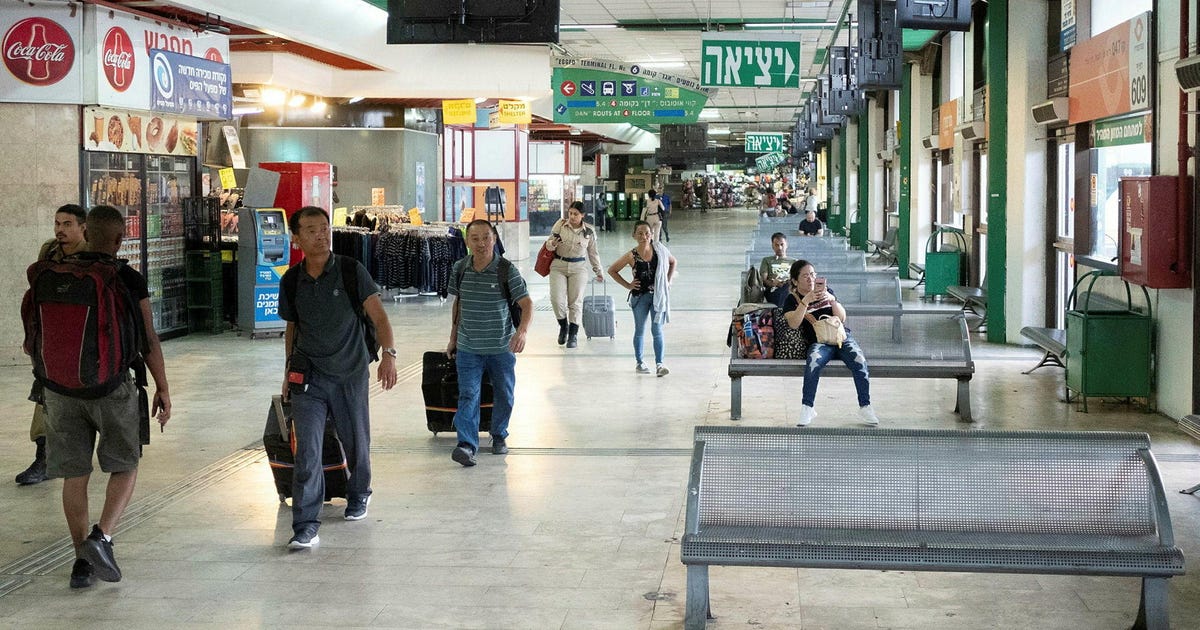Ran ShimoniVideo: Tomer Appelbaum
From day one, Tel Aviv’s Central Bus Station was a bold promise on the verge of becoming a curse. A journey through its past and present shows how early fears came true: air and noise pollution, a merchants’ revolt, dark and desolate enclaves and rampant crime. And now, after briefly serving as a shelter during missile attacks from Iran, the station is once again sinking into the shadows
Share on FacebookShare on TwitterShare on WhatsApp
From above it all looks the same, or almost the same. Aside from the blackened colors, the grime gathered along its edges, and the buses now rerouted to the top floor, Tel Aviv’s Central Bus Station appears much as it did nearly 32 years ago, on August 18, 1993, the day of its grand opening.
That festive evening, lead architect Ram Karmi strode through its gleaming corridors like a sheriff surveying his town, ready and eager to unveil the project he had worked on for decades.
Finding your way through the new octagonal structure posed no difficulty, not on that night. Chava Alberstein’s voice echoed clearly over the sound system on the sixth floor, where all the guests had gathered. Alongside the prime minister, ministers and senior police officials mingled hundreds of curious invitees: suited and poised, sipping carbonated drinks and nibbling fried pastry cigars offered by circulating hostesses.
Want to read more?
Subscribe now for on-the-ground reporting and analysis
Cancel anytime
sign up to Haaretz.com
Already signed up? Log in
